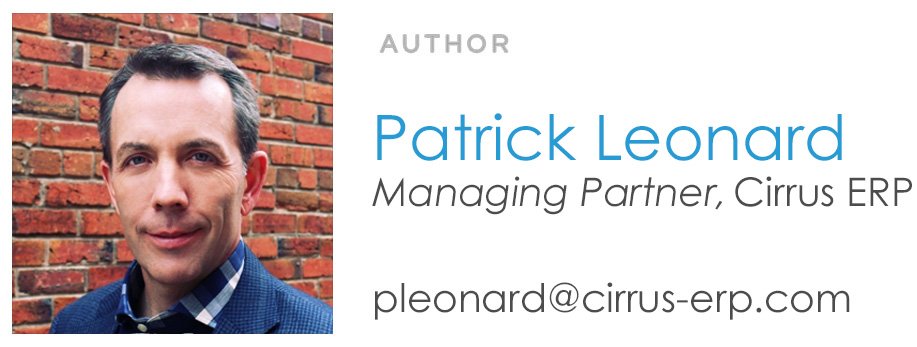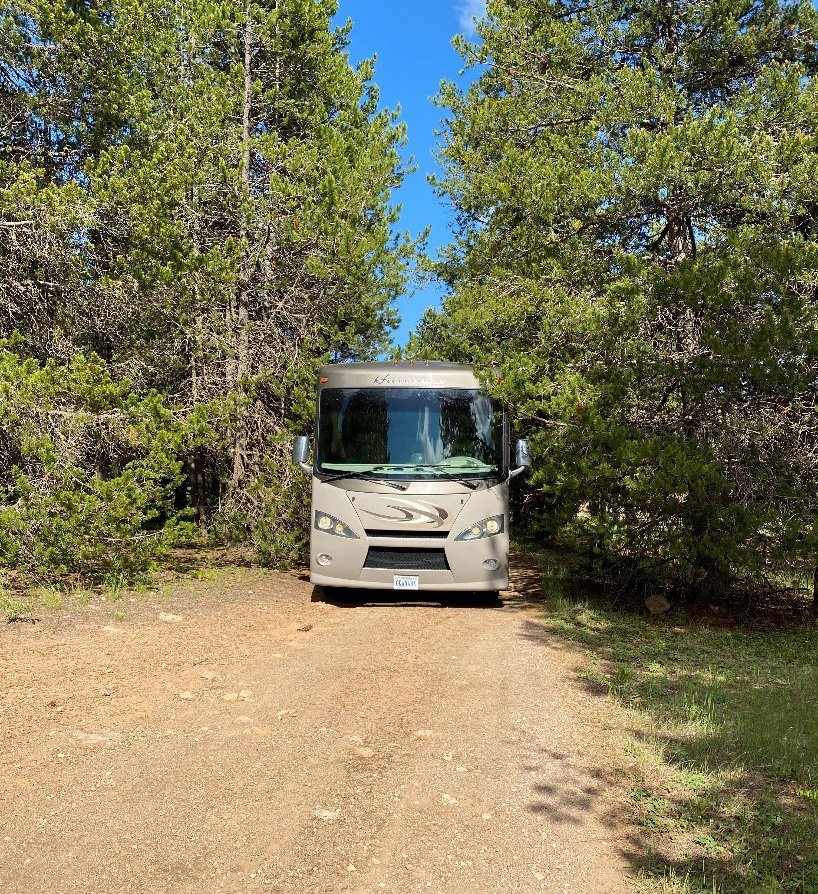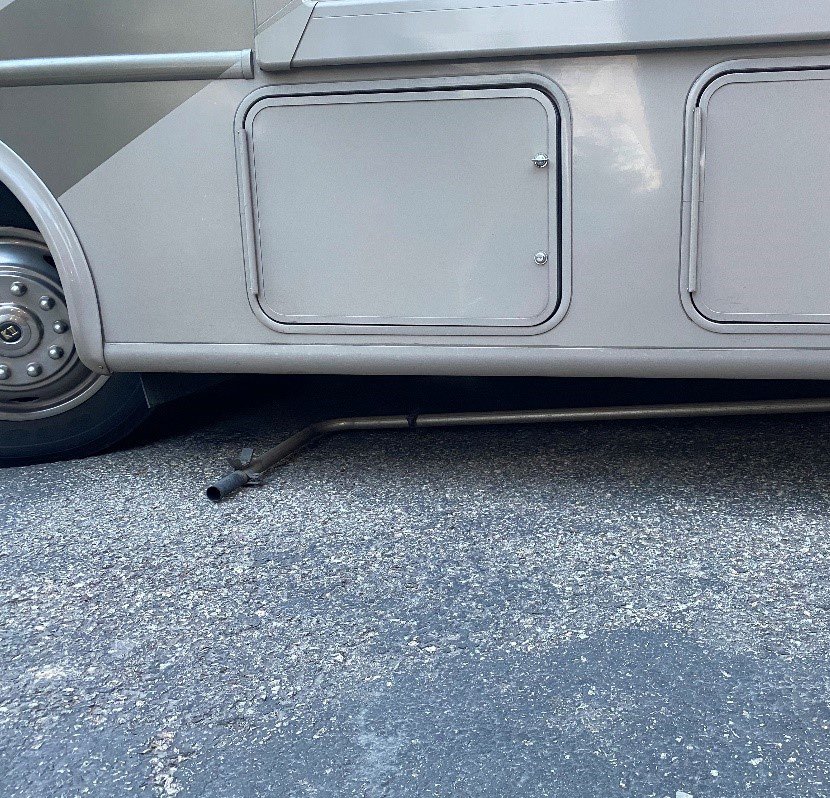RV & ERP: Great Challenges, Great Opportunities
COVID-19 has proven to be a significant challenge for all mankind. Like a quote attributed to Bill Ford Chairman of Ford Motor Company “While the challenges are great, so are the opportunities”. After 2 months of quarantining at home, I personally took the opportunity to take my family on a cross-country RV trip.
We took the COVID challenge as an opportunity to discover a large portion of the country while exploring some of our great national parks. While this trip was typical from an RVing perspective—mechanical difficulties, lots of driving, setting up and taking down the campground; it was also wrapped in the difficulty of COVID in that we did not have access to the things we took for granted in normal life, such as the ability to go out for dinner. While overcoming these challenges we were rewarded by the opportunities to discover some incredible sights and explore national parks while also getting off the grid and spending time with family in places that are wild and wonderful. I also found our cross-country RV trip had many similarities to the journey associated with an ERP deployment, plenty of challenges that if managed correctly deliver great opportunities. The following are the top similarities, which I hope you will find useful as you consider future RV trips or ERP deployments.
1. Set a course but deviate as new facts arise.
For an ERP deployment it is hard to adopt a truly agile approach, but you need to be flexible in how you react to new facts. With RVs you will learn new things as you talk to the new people you meet during your trip. Even though you had set a course, you should be able to deviate from that course in order to see the sights that really interest you, even if they were not on your original plan. This does not mean that you set out for Maine and end up in Florida, but we found that we could deviate pretty substantially along our trip and in the end it only increased our total mileage 75 miles on a planned base of 6,800 miles.
2. Get the right person to manage the important things.
You will need to have a strong project manager to make sure you are able to pay attention to the critical details. If you do not have a strong project manager, it is hard to keep up with all the competing demands and prioritize your time accordingly. Similar to driving across country, there are a lot of things to see and if you are driving the RV you won’t be able to focus on driving while also planning around the next sight to see. If you miss the opportunities, you will later ask yourself why you undertook such challenges without reaping the benefits you planned!
3. Something will go wrong; nothing ever goes completely to plan.
Be able to keep the project moving forward while you find a suitable solution to the issue that has arisen. When the wipers on the RV stopped working while we were driving 1,200 miles in a period of strong thunderstorms, we had to figure out how to drive around the rain to keep progressing towards our goal without stopping entirely. We used tricks to help get through the issues that arose (e.g., Rain-X works pretty well - even on a windshield four feet by eight feet wide).
4. Pay attention to anything out of the ordinary.
When you are running a high performing ERP deployment, the team will have an energy and a buzz around them but the activities being performed are routine and well-planned out. If you feel something is out of place, you may want to pay attention to it as small things can become big distractions for your team. Similar situations happen when driving an RV. While driving the RV in a heavy rain, we heard an unusual boom but then there were no follow-on effects. As such, we kept driving until a good Samaritan in a pickup pulled alongside us and waived us down. We immediately pulled into a rest stop that was thankfully half a mile in front of us. When we got out we found out what the boom was. Our bike rack had broken at one of the welded joints and for the past several miles we had been dragging the family bikes. The good Samaritan had also pulled into the rest stop and commented “The sparks from your bikes were really lighting up the highway!”
5. Know what is critical.
When you are undertaking an ERP implementation you need to make sure your implementation partner has been there and done that. An ERP is the lifeblood of any corporation. A bad ERP implementation can put the whole company at risk. In the RV world, when you have your wipers go out in your RV, you don’t want to take it to an auto mechanic who works primarily on brakes. You want to take it to someone who knows the intricacies of the electromechanical skeleton of an RV. These people are hard to find, but trust me, getting the critical points right is the key to success.
6. Know when to slow down.
During certain portions of an ERP implementations you need to make sure you do not advance too quickly without considering the details. One of the areas to take your time on is design. A solid design sets the foundation for the success of your deployment. The design should not be limited to just the ERP but also the full integration of the ERP into your operational environment. When driving and RV you will learn that you really need to slow down when the road is bumpy. We were taking the RV to a campground and the campground host told us we could go one of two ways to our camp site. The long sandy way that had a ton of boulders or the asphalt way that had a short bit of bumps at the end. But he said the bumps were serious. We went the asphalt way. When we came to the bumps we went slow, but no matter how slow we went the RV started rocking and swaying, almost tipping over. Fortunately, we did not tip, but we did break a kitchen cabinet in the process.
7. Identify risk areas and manage accordingly.
During smooth road conditions you can speed up but always be wary of wind gusts and unforeseen potholes. To manage the risks associated with your ERP deployment you should have the appropriate sensors in place to identify risks and issues and manage them accordingly.
8. Don’t lock yourself in.
Always make sure you build flexibility into the system to allow yourself a way out. If your design turns out to have flaws during UAT, you need to have built a flexible design that allows you to redesign on the fly in order to make it work without stalling out the project. At one stop on our trip, we found that the door was broken, and we could not get out. After climbing out the driver window, I freaked out started to break into the door with a hammer. Fortunately, I stood back and re-evaluated the approach. Rather than break the door with a hammer, I used metal BBQ skewers to pick the lock and get the door open. After taking the door apart, I found the broken piece, put it back together, and was able to use the lock mechanism from that point onward to keep the door shut.
9. Know your stakeholders.
Not all the stakeholders on the RV trip will be in the same category. You love them all, but you will have to treat them differently. Also, not all of them are going to be equally engaged at all times. Our dog found days of driving for 10 hours to be quite tedious.
10. Not everything needs to be perfect.
When implementing an ERP, you need to get to the point that your MVP solution is adequately tested and reliable. After you go-live the expectation is that you will continue to have some issues that will need to be resolved, as there are always going to be scenarios you did not plan for. It is better to get live and reap the benefits of your new solution as soon as possible and then fix minor things during the course of post go-live support. This is similar with an RV. In certain circumstances, things will break while on the road but you need to just fix them enough to get home and then deal with the final solution later. When we were driving our RV we had the exhaust from the generator fall off at one of our stops. Fortunately, it decided to fall off when we parked the RV, not while moving. To fix this the right way would require a trip to an RV shop. We did not have the time nor were we near an RV shop so we improvised and used coat hangers to attach the exhaust to the generator in a way that could safely get us home. It was definitely not the final solution but we were able to get home safely and then later have it fixed.
11. Don’t overvalue milestones vs. quality.
This lesson is essentially to be wary of overworking people in order to meet planned deadlines as they will be more likely to make a mistake or take a short-cut that in the end could cost a lot more than doing it right the first time. In the RV world, an overworked driver is more prone to making a mistake and a mistake can cause an accident. On the last day, in an effort to make it home, a mistake was made on our journey. We side-swiped a construction barricade on our last night because we decided to push for home rather than sticking to our daily driving limit. Make sure you set reasonable work expectations and stick to them, even in the face of pressure to meet milestones.
12. The first day and the last day are the happiest.
Similar to a boat, many people say the first day you pick up an RV and the day you drop off the RV are the happiest days for the owner or renter of the RV. On the first day, they are happy and have dreams of all the places that they will go. The last day, they are tired of working, driving, or fixing the problems they were faced with. For an ERP implementation, the first day everyone is full of great plans and collaborative energy associated with undertaking such a strategic initiative. The last day of project, people are tired of working their regular day jobs and contributing to the ERP project and they are ready to go back to normal business operations. Either way, RV or ERP, people should take the time to celebrate their accomplishments at the end of the road. While it may have been a lot of effort, the incredible memories (RV) or capabilities (cloud ERP) that have been created will last a lifetime.
While the challenges of a cross-country RV trip during the midst of a global pandemic are great, the rewards from overcoming these challenges will provide our family memories and laughs for years to come. While a successful cloud ERP project may not feel immediately as uplifting, you will find that you and your colleagues will reminisce over time about how much better your life has been post the successful deployment of your cloud ERP solution. You might even find your company has been elevated to new heights!
ARE YOU READY TO TAKE ON ERP CHALLENGES?
Cirrus ERP is a consultancy focused on cloud-based technologies. We are specialized in NetSuite implementation, optimization, and support for growing middle market companies. If you are interested in setting up a meeting to discuss your ERP project, contact us directly at support@cirrus-erp.com.









